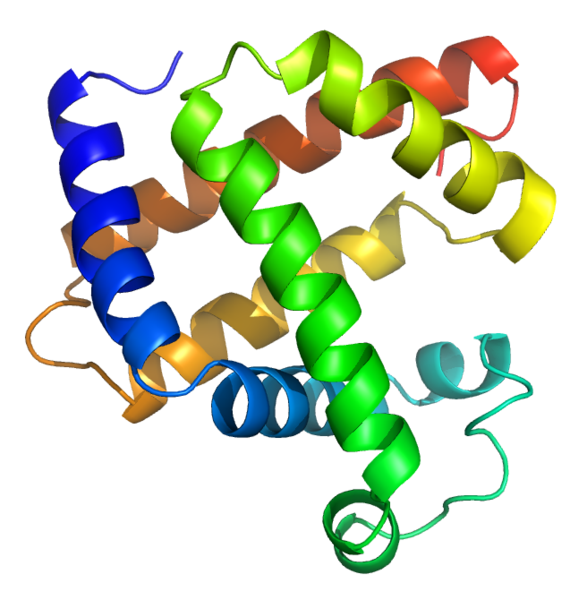Myoglobinuria
| Myoglobinuria | |
 | |
|---|---|
| Model of helical domains in myoglobin. | |
| ICD-10 | R82.1 |
| ICD-9 | 791.3 |
| DiseasesDB | 23059 |
| eMedicine | ped/1535 |
| MeSH | D009212 |
Template:Search infobox Editor-In-Chief: C. Michael Gibson, M.S., M.D. [1]
Please Take Over This Page and Apply to be Editor-In-Chief for this topic: There can be one or more than one Editor-In-Chief. You may also apply to be an Associate Editor-In-Chief of one of the subtopics below. Please mail us [2] to indicate your interest in serving either as an Editor-In-Chief of the entire topic or as an Associate Editor-In-Chief for a subtopic. Please be sure to attach your CV and or biographical sketch.
Overview
Myoglobinuria is the presence of myoglobin in the urine, usually associated with rhabdomyolysis or muscle destruction. Myoglobin is present in muscle cells as a reserve of oxygen.
Differential diagnosis of causes of myoglobinuria
Trauma, vascular problems, venoms, certain drugs and other situations can destroy or damage the muscle, releasing myoglobin to the circulation and thus to the kidneys.
Under ideal situations myoglobin will be filtered and excreted with the urine, but if too much myoglobin is released into the circulation or in case of renal problems, it can occlude the renal filtration system leading to acute tubular necrosis and acute renal insufficiency.
Differentiating myoglobinuria from hemoglobinuria
After centrifuge, the serum of myologinuria is clear, where the serum of hemoglobinuria after centrifuge is pink.
External links
- Overview at wustl.edu
Template:Abnormal clinical and laboratory findings Template:SIB de:Myoglobinurie